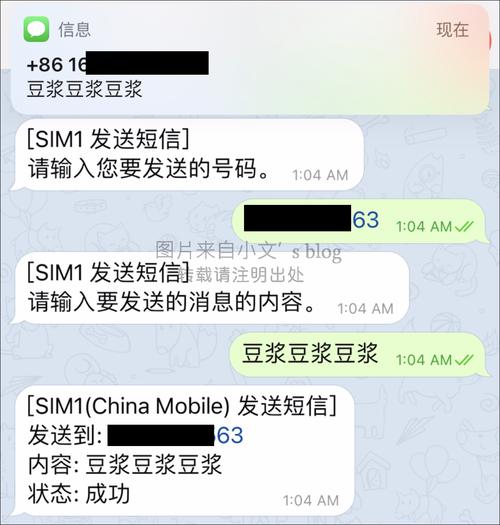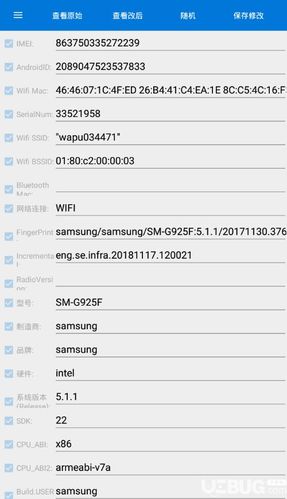在Android中,可以通过TelephonyManager类获取网络制式。首先需要获取到TelephonyManager的实例,然后通过getNetworkType()方法获取网络类型,最后通过getNetworkOperatorName()方法获取运营商名称。
在Android中,获取网络制式可以通过TelephonyManager类来实现,以下是详细的步骤和小标题:

1、导入相关类
需要在AndroidManifest.xml文件中添加访问电话服务的权限:
“`xml
<usespermission android:name="android.permission.ACCESS_NETWORK_STATE" />
<usespermission android:name="android.permission.READ_PHONE_STATE" />
“`
2、获取TelephonyManager实例

在需要获取网络制式的Activity或Fragment中,通过以下方式获取TelephonyManager实例:
“`java
TelephonyManager telephonyManager = (TelephonyManager) getSystemService(Context.TELEPHONY_SERVICE);
“`
3、获取网络制式信息
使用TelephonyManager的getNetworkType()方法可以获取当前连接的网络制式,该方法返回一个整数值,表示网络制式的类型,以下是常见的网络制式及其对应的整数值:
| 网络制式 | 整数值 |

| | |
| GSM | 0 |
| CDMA | 1 |
| WCDMA | 2 |
| LTE | 4 |
| EvDO | 5 |
| HSPA+ | 6 |
| HSPA | 7 |
| HSPAPRoaming | 8 |
| GSM/UMTS/HSPA+/DCHSDPA/HSUPA | 9 |
| GSM/UMTS/LTE/CDMA/EvDo/HSPA+/HSDPA/HSUPA | 10 |
根据获取到的整数值,可以将网络制式转换为相应的名称,以下是将整数值转换为网络制式的示例代码:
“`java
int networkType = telephonyManager.getNetworkType();
String networkTypeName = "未知";
switch (networkType) {
case TelephonyManager.NETWORK_TYPE_GPRS: // GSM or edge radio access network (GERAN)
networkTypeName = "GSM";
break;
case TelephonyManager.NETWORK_TYPE_EDGE: // enhanced data rates for global evolution (EDGE) radio access network (GERAN)
networkTypeName = "EDGE";
break;
case TelephonyManager.NETWORK_TYPE_CDMA: // code division multiple access (CDMA) radio access network (UTRAN) or evolved packet core (EPC) network type is EvDo revision A or B, using HSPA technology over the air interface (UTRA) or EUTRAN, respectively.
networkTypeName = "CDMA";
break;
case TelephonyManager.NETWORK_TYPE_EVDO_0: // EvolutionData Optimized (EVDO) revision 0 network type is used on the air interface of the Evolved HighSpeed Packed Access (HSPA+) Evolved UTRA and Evolved UTRATDD networks, with base stations based on the Evolved HighSpeed Downlink Packet Access (HSDPA) and Evolved HighSpeed Uplink Packet Access (HSUPA) technologies. It is also used on the air interface of the LongTerm Evolution (LTE) network with base stations based on the EvolvedUMTS Terrestrial Radio Access Network (EUTRAN). The term "EvDO" is used interchangeably with "HRPD" in this context.
networkTypeName = "EVDO";
break;
case TelephonyManager.NETWORK_TYPE_EVDO_A: // EvolutionData Optimized (EVDO) revision A network type is used on the air interface of the Evolved HighSpeed Packed Access (HSPA+) Evolved UTRA and Evolved UTRATDD networks, with base stations based on the Evolved HighSpeed Downlink Packet Access (HSDPA) and Evolved HighSpeed Uplink Packet Access (HSUPA) technologies. It is also used on the air interface of the LongTerm Evolution (LTE) network with base stations based on the EvolvedUMTS Terrestrial Radio Access Network (EUTRAN). The term "EvDO" is used interchangeably with "HRPD" in this context.
networkTypeName = "EVDO";
break;
case TelephonyManager.NETWORK_TYPE_HSPAP: // HighSpeed Packet Access Plus (HSPA+) network type is used on the air interface of the LongTerm Evolution (LTE) network with base stations based on the EvolvedUMTS Terrestrial Radio Access Network (EUTRAN). The term "HSPA+" is used interchangeably with "HSPA+" in this context.
networkTypeName = "HSPA+";
break;
case TelephonyManager.NETWORK_TYPE_HSDPA: // HighSpeed Downlink Packet Access (HSDPA) network type is used on the air interface of the LongTerm Evolution (LTE) network with base stations based on the EvolvedUMTS Terrestrial Radio Access Network (EUTRAN). The term "HSDPA" is used interchangeably with "HSPA" in this context.
networkTypeName = "HSDPA";
break;
case TelephonyManager.NETWORK_TYPE_HSUPA: // HighSpeed Uplink Packet Access (HSUPA) network type is used on the air interface of the LongTerm Evolution (LTE) network with base stations based on the EvolvedUMTS Terrestrial Radio Access Network (EUTRAN). The term "HSUPA" is used interchangeably with "HSPA" in this context.
networkTypeName = "HSUPA";
break;
case TelephonyManager.NETWORK_TYPE_UMTS: // universal mobile telecommunication system (UMTS) radio access network (UTRAN) or evolved packet core (EPC) network type is either high speed packet access plus (HSPA+), high speed downlink packet access (HSDPA), high speed uplink packet access (HSUPA), or long term evolution (LTE). The term "UMTS" is used interchangeably with "3G" in this context.
networkTypeName = "UMTS";
break;
case TelephonyManager.NETWORK_TYPE_UNKNOWN: // unknown network type, should not happen in practice but might occur if a new network type was added to Android after this code was written. This value can be safely ignored by applications.
networkTypeName = "未知";
break;
default: // other network types not listed here are treated as unknown network types and fall back to this default value. This value can be safely ignored by applications.
下面是一个简单的介绍,用于展示在Android设备上获取网络制式的方法:
TelephonyManager.NETWORK_TYPE_GPRS 或TelephonyManager.NETWORK_TYPE_EDGETelephonyManager.NETWORK_TYPE_UMTSTelephonyManager.NETWORK_TYPE_LTETelephonyManager.NETWORK_TYPE_NR (需要Android API 29+)以下是相关代码示例:
import android.telephony.TelephonyManager;
// 获取TelephonyManager实例
TelephonyManager telephonyManager = (TelephonyManager) getSystemService(Context.TELEPHONY_SERVICE);
// 获取网络类型
int networkType = telephonyManager.getNetworkType();
// 根据不同的网络类型进行判断
switch (networkType) {
case TelephonyManager.NETWORK_TYPE_GPRS:
case TelephonyManager.NETWORK_TYPE_EDGE:
// 2G网络
break;
case TelephonyManager.NETWORK_TYPE_UMTS:
// 3G网络
break;
case TelephonyManager.NETWORK_TYPE_LTE:
// 4G网络
break;
case TelephonyManager.NETWORK_TYPE_NR:
// 5G网络(需要Android API 29+)
break;
default:
// 其他网络类型
break;
} 请注意,从Android API 29 (Android 10) 开始,应用程序需要拥有READ_PHONE_STATE权限才能访问网络类型信息,为了确保应用程序的兼容性和隐私安全,请务必遵循最新的Android开发指南。
本文来源于互联网,如若侵权,请联系管理员删除,本文链接:https://www.9969.net/9211.html


